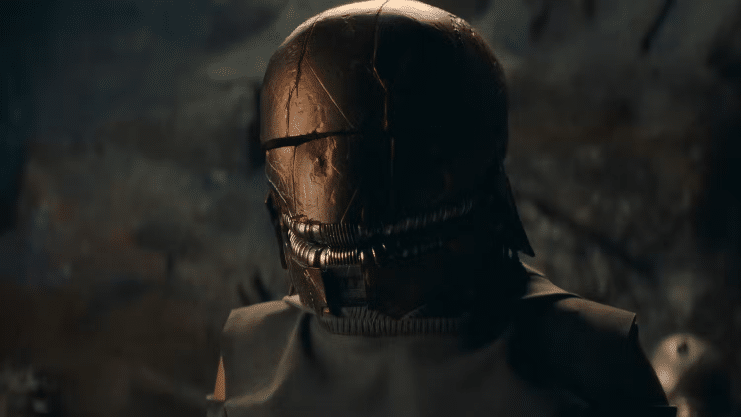Discover the hidden meaning of the Sith masks
Masks have been a fascinating element in Star Wars character design, encapsulating mystery and power. These accessories are not just part of the uniform; They are a badge that evokes fear and hides deep truths. From Darth Vader to Kylo Ren, Sith masks not only protect, but also serve as a psychological weapon in the eternal struggle between light and darkness.
The Key Role of Masks in the Sith Legacy
Since the conception of Darth Vader, whose mask has become a global icon, the Sith’s use of masks has been a constant in Star Wars narrative. Originally designed by sculptor Brian Muir and based on drawings by Ralph McQuarrie, these masks serve not only to protect the wearer from physical harm, but also help to instill an air of authority and mystery. This design has been crucial in the construction of some of the franchise’s most memorable villains.
Masks are more than just protective gear; they are a symbol of anonymity that allows the Sith to hide their identities and, with them, their weaknesses. By hiding their faces, the Sith are able to spread fear and respect among both friends and foes, cementing their status as fearsome warriors of darkness. This tradition has spanned the centuries, from the Old Republic to the Empire, displaying a diversity that reflects the individuality of those who wear it.

An instrument of war
The Sith’s strategic use of masks goes beyond simple camouflage in battle. These masks act as a barrier separating the warrior from his actions, allowing him to fully embrace his role on the dark side without regret or hesitation. This is evidenced not only in legendary figures like Darth Malak and Darth Revan, but also in contemporary figures like Kylo Ren, whose helmet was designed by Michael Kaplan as an echo of the past, meant to revive the fear his grandfather inspired.
In “The Empire Strikes Back,” the revelation that Darth Vader is Luke Skywalker’s father is one of cinema’s most shocking twists. This pivotal moment not only redefines the characters’ relationship, but also accentuates the symbolism of the mask, which hides truths that could alter the course of the galaxy. Similarly, in “The Force Awakens,” Kylo Ren’s identity as Ben Solo is kept hidden behind the mask, adding a layer of complexity to his character.
Fear and fascination
The presence of a Sith mask on screen is not only indicative of a powerful dark lord; it has also become a profound cultural symbol, representing mystery, power, and transformation. The appeal of these masks extends beyond the screen, influencing fashion, art, and design by fans and creators alike. The mask, then, is not just an element of disguise but a manifestation of the duality inherent in being human: the internal struggle between good and evil, hidden behind a facade that can be both terrifying and enigmatic.

These elements remind us that, in the Star Wars universe, masks are much more than just a costume; they are a statement, a weapon, and a shield, all in one, playing a crucial role in the narrative and in the psyches of the characters and the audience. The Sith masks not only define the characters, but they also enrich the story, adding a layer of depth and complexity that has captured the imagination of generations of fans.

